Then people long to go on pilgrimages…
And specially, from every shire’s end
Of England, down to Canterbury they wend… “
Most of the tourists who visit the island of Oahu in the winter stay in Honolulu on the south side of the island in the Waikiki Beach area, which is packed with hotels, restaurants, high-end shopping and tourist traps of every kind. Indeed, many visitors never leave Honolulu and have no idea how magnificent the natural wonders of rural Oahu really are.
While we make the forty-five-minute drive to Honolulu several times a week for good food and artistic inspiration, we are happy not to live there. We have chosen the very small town of Kaaawa, once an ancient Hawaiian village, and now a not very wide spot on Kamehameha Highway, the only road that reaches from the southern end of the island to the north. This twenty-three-mile journey will take you through some of the most beautiful mountainous rainforest in the world—the pristine and undeveloped Koolau range.
However, we need to make two stops in Honolulu before heading into the countryside.
The Iolani Palace and the Bishop Museum are magnificent buildings which serve as windows into the tumultuous history of the Hawaiian Kingdom. The Iolani Palace (364 South King Street,) located in downtown Honolulu, is the only royal palace in America. King David Kalakaua built this impressive American Florentine style residence in 1882 on land that had earlier been the home and ancient burial site of the Kamehameha dynasty. This historic building has been beautifully restored with many of the original furnishings. King David, who traveled around the world and visited many royal residences in Europe and elsewhere, incorporated the latest technology into his palace, installing electricity and telephones before these innovations appeared in the White House. An excellent self-guided audio tour is available at the Iolani Palace, allowing visitors to take their own time admiring the gorgeous koa wood staircase, lingering in the throne room and inspecting the intricate details of the private rooms of King David, his wife, Queen Kapiolani, and his sister, Queen Liliuokalani who succeeded him and became the final monarch of the Hawaiian Kingdom. Queen Liliuokalani’s room is especially poignant, as it was here that she was incarcerated after being deposed by a group of American businessmen.
The Bernice Pauahi Bishop Museum (1525 Bernice Street,) is another Nineteenth Century architectural wonder and a treasure trove of Hawaiian history, natural science and Polynesian culture. This world-class museum was built in 1889 by Charles Reed Bishop as a memorial to his wife, Princess Bernice, the last descendent of the royal Kamehameha dynasty. The Hawaiian Hall, built in the Romanesque Revival style, with the interior furnished in priceless koa wood, is now on the National Register of Historic Places. On entering this beautiful building, guests should first visit the small room to the left containing a chronological presentation of artifacts, photographs and displays of all the kings and queens of the Hawaiian Kingdom. Having gained a sense of historic context, visitors can move on to the central gallery, containing a full-sized sperm whale skeleton suspended over the expansive display area. Here the world’s largest collection of Polynesian cultural artifacts is elegantly presented in hand carved koa wood cases.
The museum has expanded over the decades and now includes several other display buildings, including a charming interactive children’s museum with a large model of a “working” volcano and active displays demonstrating how lava melts and how Pacific tides and winds function. There is also a planetarium with excellent presentations, including my favorite, The Wayfinders, which shows how the ancient Polynesians voyaged thousands of miles in wooden canoes navigating only by observing the stars, tides, winds and flights of birds. The museum’s collection also includes more than twenty-four million natural history specimens and a library with extensive archives pertaining to Hawaii and the Pacific.
Now that we know at least a little about Hawaii’s history, culture and natural setting, we’re ready for the glorious “road trip” through the Koolau mountain range to the windward, or eastern side of the island. You have three choices: the Kalanianaole Highway, which follows the eastern coastline heading north with many beautiful sights along the way, including whale watching in the winter, the Pali Highway, ironically referred to as an “Interstate” highway, which links two military bases with no exits and plows through the gorgeous mountainous rainforest with no fooling around, or the Likelike Highway, the quickest route through the mountains which will take you from Honolulu to the town of Kaneohe, covering the just under eleven miles in less than half an hour.
Let’s take the Likelike, as we will need to stop for lunch in Kaneohe, an old Hawaiian town that has no interest in tourism. Fresh Catch and Dean’s Drive In are both good choices, both owned by local “boys” who know how to cook. Fresh Catch, as one might guess, specializes in locally caught fish, including ahi (tuna,) tako (octopus,) and all sorts of other fish and seafood that might have been brought in that morning. Fresh Catch specializes in poke, which is raw fish, chopped and seasoned with raw onions, seaweed and other secret spices, and often served over rice. (See my Hawaiian Tea menu on this website for more details on how to make your own poke.) Fresh Catch is the kind of place where you order at the counter and eat your lunch out of a styrofoam box in one of the booths. You will be joined by local construction workers in their chartreuse tee shirts, taking their lunch breaks.
Dean’s Drive In is also an order-at-the-counter place run by Dean and his friendly and welcoming wife, who serve good home-cooked food, including an extensive menu of fresh fish and vegetarian items, such as ahi cakes, the tuna version of crab cakes, and taro burgers. Surprisingly, Dean’s also serves perfectly broiled lamb chops. And if his wife’s light and moist cornbread is available that day, be sure to order some.
Before leaving Kaneohe, it’s a good idea to make a note to self to return when you’re ready for an elegant night out with your loved one in a spectacular garden setting right at the foot of the Koolau mountain range. Haleiwa Joe’s at 46-336 Haiku Road is the place, not to be confused with its partner restaurant of the same name in the North Shore town of Haleiwa. Kaneohe’s Haleiwa Joe’s, unlike most restaurants in Hawaii, is oriented toward the mountains rather than the ocean, and this hidden gem has a gorgeous sunken tropical garden which you can explore on foot if you arrive before dark. Arriving early is a good idea, as they do not take reservations, and Haleiwa Joe’s is the go-to place for local couples and families to celebrate every special occasion, from birthdays to high school graduations. This is a festive place that serves giant mai tais, enormous portions of prime rib, and excellent local fresh fish presentations. If possible, save room for dessert, as Haleiwa Joe’s huge Burnt Caramel Macadamia Nut Sundae with fresh fruit is a tropical dream, big enough to serve two or more.
A short cruise out of Kaneohe on Kahekili Highway will bring you to the Koolau Center, a small shopping mall with a grocery store, a movie theater and several little local eating spots. Although most people don’t travel to Hawaii to eat Mexican Food, the family owned El Chile Relleno is a happy place with surprisingly good food and friendly service. As the name suggests, one can order from a wide variety of stuffed peppers served with tasty rice and beans, but the extensive menu offers all sorts of well-prepared Mexican dishes. The fleshly made horchata, sold by the pitcher, is a refreshing accompaniment to whatever you choose to eat, and the made-to-order churros, served with vanilla ice cream and chocolate sauce make a perfect ending to the meal.
At the tiny Temple Valley Chinese Restaurant in the north corner of the Koolau Center, you can order barbecued pork or chicken to go or sit down for a quick and casual Chinese meal. We like to get bubble tea drinks there, made with fresh fruit, not powdered mixes, to slurp on the road as we head up the east shore. Wayne loves fresh mango with rainbow jelly cubes and I go with my favorite, fresh pineapple and banana with tapioca pearls. But before continuing your journey, you might want to make a brief stop at the lovely Byodo-In Temple, located right across the highway in the Valley of the Temples Memorial park (47-200 Kahekili Highway.)
The Byodo-In Temple was built in 1968 to commemorate the 100-year anniversary of the first Japanese immigrants to come to Hawaii. This Buddhist temple is a replica of the 950-year-old temple of Uji in Kyoto. The temple is used for weddings, funerals and other kinds of gatherings, but visitors of all denominations are welcome to come for quiet meditation or simply to admire the gorgeous and serene setting, with its three-ton brass peace bell, koi ponds and Japanese gardens set at the foot of the looming and mysteriously beautiful Koolau mountains.
Back in the car, with the radio set to Kuana Torres Kahele Radio for the best Hawaiian music, the highway leads us deep into the countryside where there is not a hotel or a fancy restaurant in sight. The official entrance to rural Oahu is the convergence of Kahikili Highway and Old Kamehameha Highway at the intersection of a gas station, an ancient Banyan tree, a surprisingly good Thai Food Truck and the Hygienic Store, a still functioning old wooden remnant of the days when Japanese farmers needed some place to buy soap and other practical everyday items. Today, the Hygienic Store is the place where locals buy their beer on their way home from work.
From now on, we will be on Kamehameha Highway, where we will travel first along Kaneohe Bay and then along the Pacific Ocean itself. If the road floods due to torrential downfalls, or if the waves crash over the road, we will be out of luck, as there are no alternative routes to get to the North Shore.
On the mountain side of the highway, we will soon discover the place to eat the most authentic Hawaiian food available anywhere on earth: The Waiahole Poi Factory (48-140 Kamehameha Highway.) This dilapidated old wooden structure with a few picnic tables in front is where Hawaiian families buy their poi, the ancient Hawaiian staple made from pounded taro root. Authentic Hawaiian lunches are also available, including Kalua Pig, Squid Luau, Pork Laulau, Chicken Long Rice, Lomi Salmon and Haupia, (Coconut Pudding) for dessert. Many of these items are made in the traditional Hawaiian manner, baked wrapped in leaves in an underground oven known as an imu. I recommend ordering a combination lunch, so you can taste a little of everything. You can choose to have either rice or poi with your lunch.
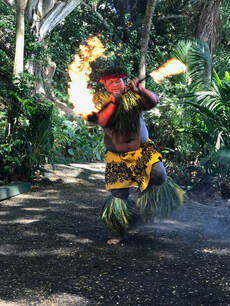
At this point in your journey, you cannot possibly still be hungry, so it’s time for adventure. On the ocean side of the road, look for the Macadamia Farm Outlet, our favorite spot for a quick introduction to native Hawaiian plants and ancient Polynesian survival skills. This low-key tourist bus stop sells local specialties such as macadamia nuts, which you can sample in many flavors for free (okay, we may be stuffed on fish and pork, but we can still sample a few dozen free macadamia nuts,) along with free Hawaiian-grown Kona coffee.
Be sure to walk through the gift shop and sign up for one of the tours. You will be boarded onto a very elderly bus driven by one of the local guys who will drive you through the farm and introduce you to a mind-boggling array of local trees, fruits and flowers, culminating in a visit to the “village,” where your host will teach you how to crack a coconut and make fire with two sticks of wood, all narrated with dry Hawaiian humor. You will be surprised by how much you actually learn on this entertaining little tour. The Macadamia Farm Outlet is part of a larger operation, the Kualoa Ranch, located a little farther up the highway on the mountain side.
Make sure to stop at Kualoa Ranch, the jewel in the crown of Windward Oahu. This 4,000 acre privately owned working cattle ranch is located on land that was sacred to the ancient Hawaiians. In 1850, King Kamehameha III sold a large portion of this imperial land to Dr. Gerrit Judd, who translated medical journals into the Hawaiian language for the King. Dr. Judd and his family ran a sugar mill on the land until 1870. The ruins of the old sugar mill are right next to the highway in full view of everyone driving along the road. The ranch was occupied by the military during the Second World War but was eventually returned to the Morgan family, the descendants of Dr. Judd. Today the entire region has been added to the National Register of Historic Places as the Kualoa Ahupua’a Historic District.
Today, the Morgan family runs Kualoa Ranch as a cattle ranching operation and a low-key tourist destination. An ancient Hawaiian fishpond, the Moli’I Fishpond is located on the ranch property, and the ranch owns a large herd of beautiful and well-cared-for horses, available for horseback riding. At twilight, the horses are often released into the fenced meadow right beside the highway facing the ocean. It is a moving spectacle to see the horses, running and rolling over after a day’s work and grazing together in one of the most beautiful settings in the world.
Kualoa Ranch offers a wide range of activities, including Movie Site Tours, as the ranch is a popular location for filming, including Jurassic Park, Godzilla, Hawaii Five-0 and many other movies and television shows. Ziplines and ATV Tours are also available at the ranch. A new Taste of Kualoa Food Tour has recently been implemented, including a farm-to-fork experience featuring food that was grown, harvested and prepared on the ranch. In addition, the ranch hosts all kinds of local events, such as the Hawaii State Farm Fair, rodeos, the Hawaii Spartan Race Trifecta and other sporting events and competitions. A wealth of information is available at www.kualoa.com.
Finally, the greatest gift that Oahu’s Windward Side has to share is its beaches, parks, hiking trails and natural beauty, most of which are completely free.


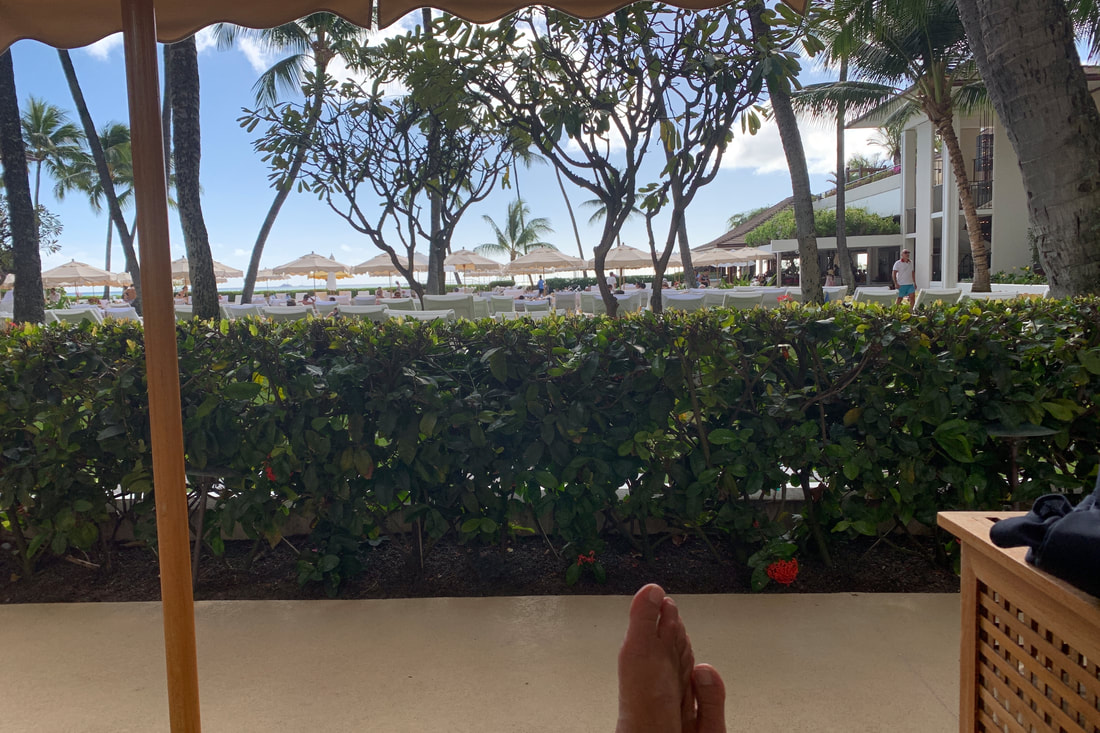


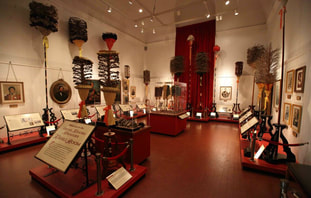
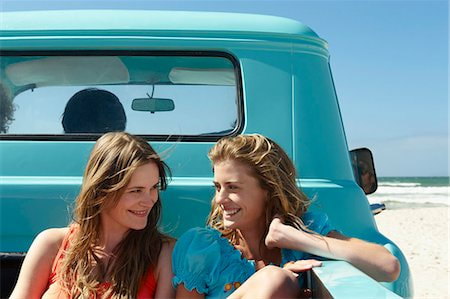






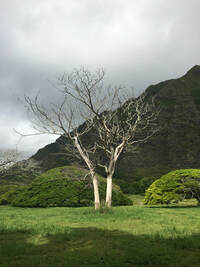

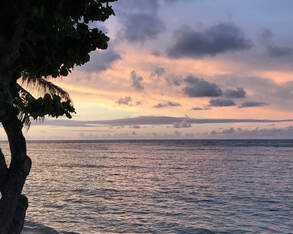


 RSS Feed
RSS Feed